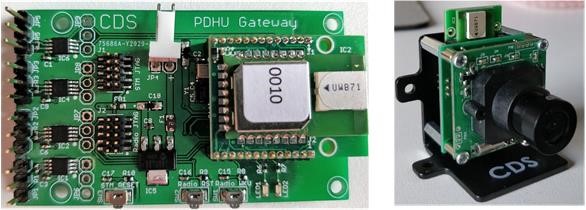SpaceTech - Activities
WiSAT - Wireless Communication Bus for Satellite ApplicationsControl Data System SRL

The scope of Wireless Communication Bus for SATellite Applications – Phase 3 (WiSAT-3) project is to develop a SpW-to-UWB wireless interface unit (WIU) engineering qualification model (EQM) designed to implement intra-spacecraft UWB wireless connections. The built up SpW-to-UWB WIU EQM envisages to achieve a TRL of 6. The WiSAT-3 project aims to continue the activities initially set up within WiSAT-1 project executed by CDS (Control Data System), GMV Innovating Solutions S.R.L. (GMV-ROM), and Technical University of Cluj-Napoca (TUC-N) under the Romanian Industry Incentive Scheme AO/1-7557/13/NL/SC (2014-2015), and afterwards developed within WiSAT-2 project executed by CDS and German Aerospace Centre (DLR) under the Romanian Industry Incentive Scheme AO/1-8545/16/NL/CBi (2017-2018). The aforementioned WiSAT-Phase 1 and WiSAT-Phase 2 were coordinated by CDS and their results were successfully delivered to ESA.
Within the framework of the WiSAT projects, it was investigated (WiSAT-1) and demonstrated (WiSAT-2) the feasibility of the Ultra-wideband (UWB) wireless communication to replace, complement or extend on-board wired data communication systems by reducing in this way the overall dry mass of the spacecraft and the effort of assembling, integration, and testing (AIT) tasks while enhancing the design flexibility and late redesign tasks.
WiSAT system requirements were derived from the DLR satellite Euglena and Combined Regenerative Organic Food Production in Space (Eu:CROPIS) mission launched by Space-X on board Falcon 9 on the 3rd of December 2018. Based on the requirements of the DLR Eu:CROPIS mission regarding wireless intra-spacecraft communications, a two-segment intra-spacecraft network was implemented. In this scheme, the spacecraft wireless network replaces point-to-point SpaceWire (SpW) link between the Command and Data Handling Unit (CDHU) and Payload Data Handling Unit (PDHU), and the payload wireless network replaces the serial point-to-multipoint links between the PDHU and the scientific sensors. The work consisted of adequately prototyping specific wireless gateways and nodes to properly handle the SpW data on the PDHU-to-CDHU link and the sensor data on the PDHU-to-sensor links. Each WiSAT prototype uses a UWB wireless interface for data transmission over the radio channel and a dedicated interface to ensure connectivity with the corresponding on-board device. The developed UWB gateways and nodes make use of the VN360 UWB Node designed by CDS to provide the appropriate UWB RF front-end. All the WiSAT solutions run a customized ISA100.11a protocol over an IEEE 802.15.4UWB PHY communication stack.
